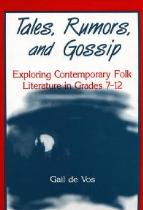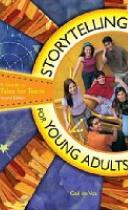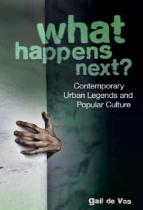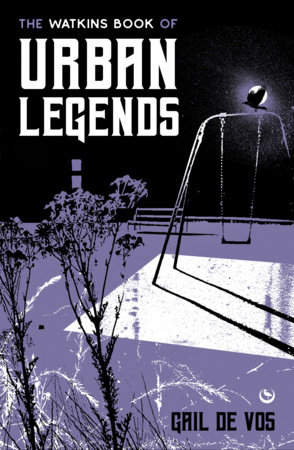One of the most frequent questions I field queries my interest in contemporary legends and my publishing history on that wide subject. And so, it began, as so many stories do…
A long, long time ago…
I was working on my Master’s Degree in Library and Information Studies and decided to research storytelling to teens as it was a special interest of mine at that time. Not long after I graduated, I purchased a book from the educational publisher Libraries Unlimited. Along with the book I received a catalogue of publications. The front piece had a notice that they were looking for ideas for future publications so…I sent in a query about my research. I had a phone call within a week and a contract not long after that for the first edition of Storytelling for Young Adults: Techniques and Treasury, published in 1991. The book was reviewed favourably and took me travelling from the Northwest Territories south to Florida to speak to librarians, storytellers, and educators. One of the topics I explored in the book was urban legends and their connections to teen audiences. It was also the one topic that most people in my audience, regardless of age, wanted to hear more about.

The focus of my third book, the second for Libraries Unlimited, was a natural progression from this one and occupied me (and my family) for five years from the time I signed a contract to hold the finished product in my hands. Tales, Rumors, and Gossip: Exploring Contemporary Folk Literature in Grades 7-12 was published in 1996. Once again, the reviews were positive and ultimately gave me the courage to attend my first conference meeting of the International Society of Contemporary Legend (ISCLR) held in Copenhagen in 2006.

The second edition of Storytelling for Young Adults: A Guide for Tales for Teens was published in 2003. While a small portion of the text is like that of the first edition, all the annotated entries and stories are new to this edition but still had a considerable focus on contemporary legends.

My writing focus shifted somewhat for the next few publications, but contemporary legends were always at the forefront of my storytelling interests and so, in 2012, I published my research on the changes in contemporary legends with the onset of the popularity of computer technology and social networking. I wanted to see what, if any, changes occurred to these tales. What Happens Next? Contemporary Urban Legends and Popular Culture explores the intersection among the oral tradition and the Internet.

Although I stopped writing books after this publication, I continued to write essays for various books on a wide range of topics. The chapter “The Writing Connection: Young Adults, Folk Tales, and Urban Legends,” married my interests about folklore and popular culture in the book Engaging Teens with Story: How to Inspire and Educate Youth with Storytelling edited by Janice M. Del Negro and Melanie A. Kimball, published in 2017. I am especially proud of my chapter on “The Wendigo as Monster: Indigenous Belief, Cultural Appropriation, and Popular Horror” in the award winning North American Monsters: A Contemporary Legend Casebook, edited by David J. Puglia in 2022. My research presentation on Contemporary Legends about Furries for the 2023 ISCLR conference in Sheffield, England can be obtained online (de Vos, Gail. 2024. “Furries in Canadian Schools and Beyond”. Contemporary Legend 2 (June):1-5. https://scholarworks.iu.edu/journals/index.php/cl/article/view/38421.) I presented on contemporary legends and wildfires at the conference in Logan, Utah last summer and although some of the legends found their way into the new book, the research is not complete and will probably not be as long as wildfires consume our forests and our environment.
Which brings us to the new book. It has been a somewhat circular journey in some respects since this book, like the first one, was the result of a happy coincidence and good timing. Thanks to Neil Philip, Audreys Books, and Watkins Publishing for starting me on the journey.


Recent Comments